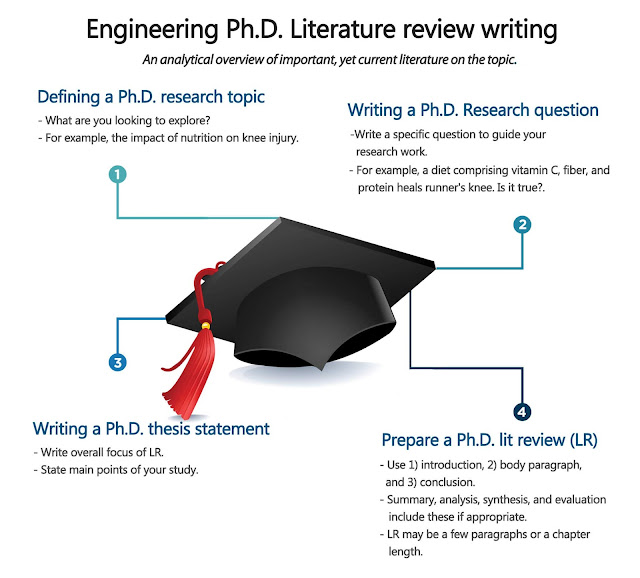Guide to an engineering Ph.D. literature review

Contemplating a literature review? Remember these sage tips from Ph.D. dissertation help guides. “What do researchers know? What do they not know? What has been researched and what has not been researched? Is the research reliable and trustworthy? Where are the gaps in the knowledge? When you compile all that together, you have yourself a literature review.” ― Jim Ollhoff, How to Write a Literature Review. As you write the Ph.D. engineering literature review, ensure you follow these tips to showcase your ideas (Jensen) : Compare and contrast views of different authors; critique previous research work; reveal lapses in existing research; shed light on how your work relates to previous work; state problems, conflicts, debates, gaps; define a research area in a new way; and, probe previous work’s results. You must structure your lit review. Yes, these are the 2 ways you can arrange your Ph.D. literature review . A chronological structure lis...
